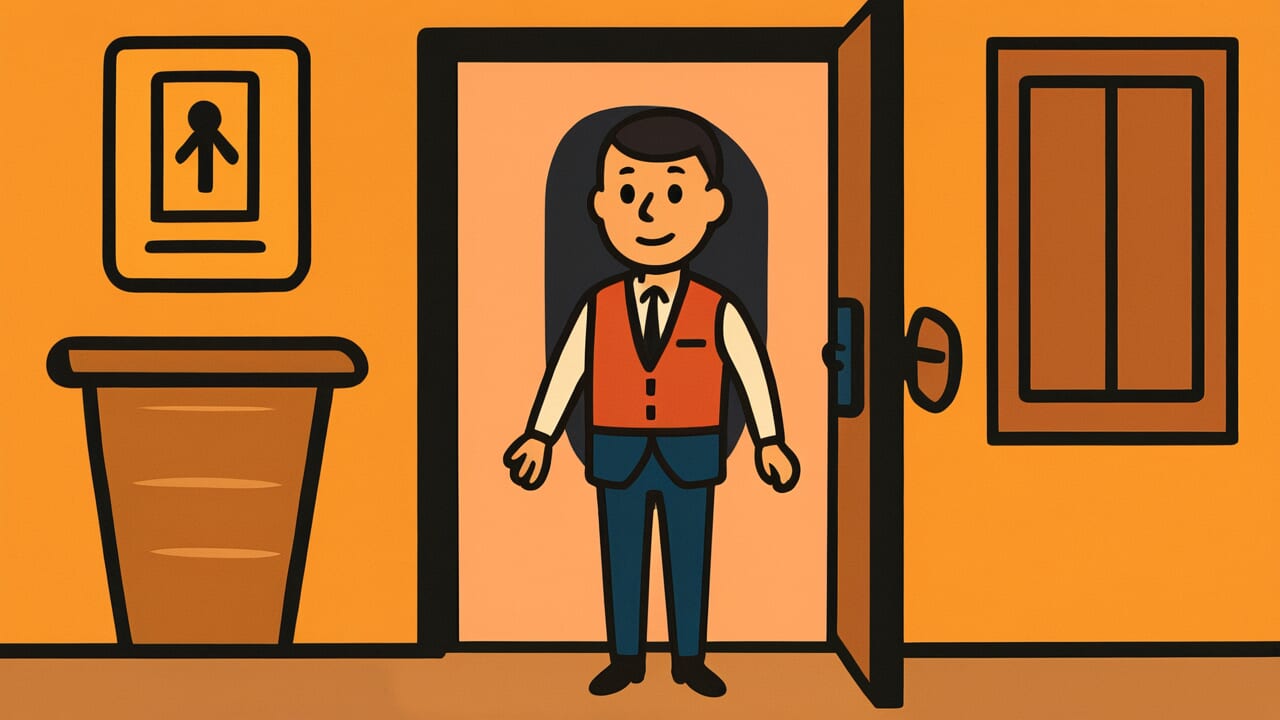How to Read “Good clothes open all doors”
Good clothes open all doors
[good klohz OH-puhn awl doorz]
All words use standard pronunciation.
Meaning of “Good clothes open all doors”
Simply put, this proverb means that dressing well gives you better access to opportunities and social situations.
The literal words paint a clear picture. Good clothes act like a key that unlocks doors. These doors represent chances, jobs, relationships, and social circles. When you dress appropriately, people are more likely to welcome you and take you seriously.
This saying applies everywhere in modern life. Job interviews often depend on first impressions within seconds. Business meetings, social events, and even casual encounters can go differently based on appearance. Restaurant staff might seat well-dressed customers at better tables. Store clerks may provide more helpful service to people who look prosperous.
What makes this wisdom interesting is how it reveals human nature. We judge quickly based on visual cues, even when we know it’s not always fair. People often dress up for important occasions because they understand this reality. The proverb doesn’t say this judgment is right or wrong, just that it happens consistently.
Origin and Etymology
The exact origin of this specific phrase is unknown, though similar ideas appear throughout recorded history. Clothing has always served as a social signal across different cultures and time periods. Ancient societies used dress to indicate status, profession, and social standing.
During medieval times, clothing laws actually restricted what different social classes could wear. Only nobles could afford certain fabrics and colors. This made clothing an instant identifier of someone’s place in society. Well-dressed people literally had access to places and people that others could not approach.
The modern version of this saying likely developed as societies became more mobile. When people could change their social position, clothing became a tool for advancement. The phrase spread through business culture and social advice. It reflects how appearance remained important even as rigid class systems loosened over time.
Interesting Facts
The word “clothes” comes from the Old English “clath,” meaning cloth or covering. This connects to the German “kleid” and Dutch “kleed,” showing how Germanic languages share this root. The phrase uses “doors” metaphorically, which is common in many languages when talking about opportunities.
Interestingly, this proverb follows a simple cause-and-effect structure that makes it easy to remember. The alliteration of “good” and “clothes” doesn’t exist, but the rhythm makes it stick in memory anyway.
Usage Examples
- Mother to teenage son: “Wear your nice shirt to the job interview – good clothes open all doors.”
- Coworker to colleague: “I always dress up for client meetings because good clothes open all doors.”
Universal Wisdom
This proverb taps into fundamental aspects of human psychology that have shaped survival for thousands of years. Our brains evolved to make quick judgments about strangers because slow decisions could mean danger. Appearance provided instant information about someone’s health, resources, and social connections. These snap judgments helped our ancestors navigate complex social situations safely.
The deeper truth reveals how humans balance individual merit with group belonging. We want to believe that character matters most, yet we consistently respond to visual signals. This creates tension between our ideals and our instincts. Good clothing signals that someone understands social rules and has resources to maintain standards. It suggests they can be trusted to behave appropriately in different situations.
What makes this wisdom universal is how it addresses the gap between inner worth and outer recognition. Every generation discovers that talent alone isn’t enough. Social acceptance requires understanding unwritten codes and expectations. The proverb acknowledges this reality without judgment. It simply observes that humans use appearance as a shortcut to evaluate others. This pattern persists because it serves both individual and group needs, even when it sometimes excludes worthy people or includes unworthy ones.
When AI Hears This
Good clothes work like a deposit at a store. People feel safer dealing with someone who invested money in appearance. This reduces their worry about taking risks with strangers. Well-dressed people get faster access because others skip the usual waiting period. The clothing becomes proof of reliability before any real proof exists.
Humans created this system without planning it consciously. Everyone agrees that expensive clothes mean trustworthiness, even though fabric cannot predict behavior. This happens because making quick decisions helped our ancestors survive dangerous situations. We still use the same shortcuts today in offices and social settings. The clothing acts as insurance that makes people comfortable opening doors.
This behavior seems wasteful but actually saves enormous amounts of time and energy. Instead of lengthy background checks, humans use visual cues to make instant choices. The system works because most people who invest in good clothes also invest in keeping their reputation clean. What appears shallow actually creates an efficient way for strangers to do business together safely.
Lessons for Today
Understanding this wisdom means recognizing how appearance affects opportunities without losing sight of deeper values. The challenge lies in using this knowledge strategically while maintaining authenticity. People who dress appropriately for situations often find doors opening more easily, but this doesn’t mean becoming someone you’re not.
In relationships and professional settings, this awareness helps navigate social expectations more effectively. Recognizing that others judge quickly allows you to present yourself thoughtfully. This might mean researching dress codes, investing in quality basics, or simply ensuring clothes are clean and well-fitted. The goal isn’t deception but communication through appearance.
The broader lesson extends beyond personal benefit to understanding social dynamics. Groups often use appearance standards to maintain identity and cohesion. Recognizing these patterns helps build empathy for why dress codes exist and how they affect different people. Some individuals have more resources to meet these expectations than others. Wise communities balance the practical benefits of appearance standards with fairness and inclusion. The proverb reminds us that while we can’t eliminate quick judgments, we can be more conscious about how we make and respond to them.



Comments